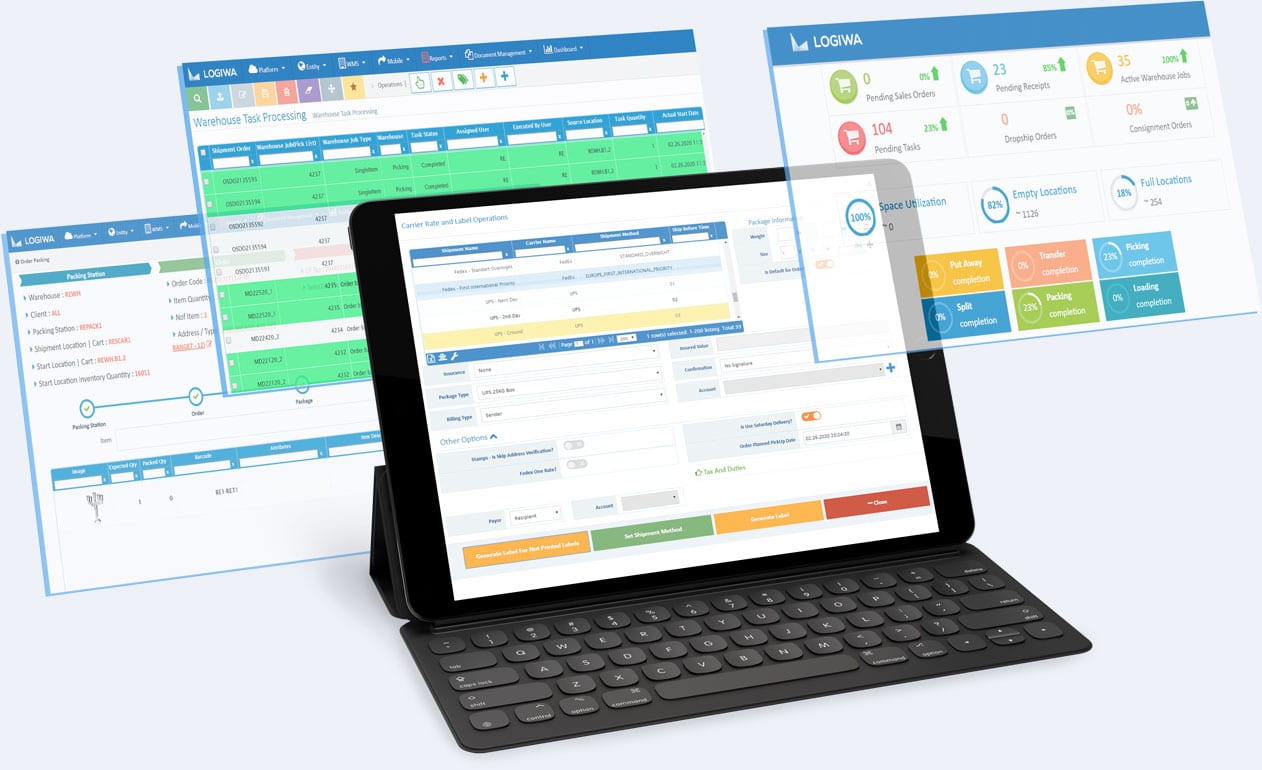Today’s warehouses cannot risk inaccuracies or afford disruptions in fulfillment operations. Situations like running out of storage space, misplacing inventory, and shipping inaccurate orders all have costly consequences: from lower warehouse productivity and employee morale to lost profits and customer satisfaction.
To keep your fulfillment center in top working order and avoid major setbacks, you need the help of modern warehouse management systems (WMS) and smart warehousing techniques to keep operations flowing. Leading warehousing methods like smart putaway algorithms help to ensure ongoing success in the face of evolving inventory and fluctuating demand.
In this blog, we will discuss directed putaway: what it is, how it works to maximize fulfillment results, and some best practices for getting directed putaway to work for your specific warehouse operations.
What Is Directed Putaway?
Directed putaway, also referred to as smart putaway algorithms, seeks to simplify inbound operations and optimize the transfer of goods within a distribution center. Using custom rules and AI-powered algorithms, it identifies the best locations for inventory inside a warehouse to improve the efficiency of fulfillment processes.
Every step taken during the picking process, for instance, costs time and money. This makes having your facility organized by certain characteristics like current item popularity, projected demand, custom client needs, expiration dates, weight capacity, etc. crucial for streamlining workflows.

Transform your warehouse to a DTC fulfillment center
Why Is Directed Putaway Important to Fulfillment Success?
It can be easy to prioritize picking and packing operations when faced with surges in demand and peak season stress. But the truth is that putaway affects the speed and accuracy of these processes, as well as the cost-effectiveness of your facility and resource management.
Some examples of how this might play out in your warehouse, include the following:
-
- Fast-moving stock would be stored near sorting and packing stations based on their high turnover rate.
- Replenishment and picking jobs would have double-deep racks factored in, so your operations would refrain from wasting time and resources trying to reach hard-to-reach pallets and storage bins.
- Inventory would be dynamically transferred to make room for new items and keep your facility optimized as your stock changes and operations grow.
- Items that are closer to expiration would be deliberately stored to be picked sooner than those with a longer remaining shelf life.
- Valuable warehouse space would be created and utilized.
- Picking paths would be optimized for warehouse workers and prioritize pick bins over, say, distant or hard-to-reach storage locations.
With direct putaway guiding your operations, walking paths can be optimized, fulfillment processes are accomplished more smoothly, and throughput is increased. You know exactly where items are, where they ought to be stored, and how best to retrieve them. For more insights on directed putaway, check out Logiwa’s QuickTake webinar, “Saving Time & Money with Directed Putaway.”
4 Steps to Get the Most from Directed Putaway in Your Warehouse
Smart inventory management is a key to successful warehousing, but your approach becomes even more important when leveraging a smart putaway process. Here are some key ways to ensure your direct putaway methods are able to achieve their greatest impact.
Prioritize Data Accuracy:
If your inventory counts are incorrect or continuously out-of-sync, you are essentially feeding your WMS bad data and expecting smart algorithms to perform miracles. To avoid shortages or overstock, as well as delays in fulfillment operations and failure to meet SLAs, your WMS needs to be operating off of completely accurate inventory data. To ensure your directed putaway can optimize your warehouse and workflows, make sure your data is meticulous from the start.
Use Smart Prioritization:
Even if you’ve got AI-powered software in place, your WMS needs help to prioritize inventory types and restructure your facility to meet the unique needs of your operation. Whether you’re concerned with expiry dates, keeping specific SKUs grouped together, or facilitating the easiest possible picking routes, take the time to ensure your WMS has the correct rules in place to accomplish these goals. By organizing your warehouse operations according to smart rules and configuring your WMS to match, you will increase productivity and efficiency of the system.
Continue to Monitor Your Operations:
When your inventory levels are out of sync, or replenishment processes stalled, putaway algorithms may end up creating even more chaos for you to sort out. For that reason, you must continue certain steps like cyclical inventory counts, systems testing, and facility inspections to maintain fulfillment excellence. You may not have to do these processes as often with smart inventory management and directed putaway in place, but to forgo these steps completely will increase the likelihood of one or more discrepancies arising.
Use Scanning Technology:
Scanning is another way to make certain your operations continue flawlessly and without interruptions. It provides added protection to directed putaway operations. With the help of barcodes and scanning tools, you will be able to complete putaway and transfers the moment you receive or scan an item. This expedites the speed of directed putaway, mitigates human error as items are being processed, and eliminates picking, packing and shipping errors – all key ingredients for ongoing fulfillment success.
Getting Started with Directed Putaway
Taking advantage of directed putaway starts with choosing the right WMS. As you seek to stay ahead of growing inventory levels and take on new warehouses, clients, and products, you need a solution capable of flexible and highly configurable putaway algorithms. Logiwa’s directed putaway saves you time and helps you efficiently manage your busy warehouse.
Logiwa WMS was built to handle the complexities of high-volume fulfillment, and helps warehouses save time and space using smart putaway algorithms. Our industry-leading approach to inventory management ensures B2B, DTC, and hybrid operations avoid congestion, errors, and product damage. Armed with information about product turnover rates, sizes, and storage data, Logiwa’s directed putaway system directs workers to the most efficient locations to place inventory every time.
Learn more about our streamlining warehouse features and award-winning cloud fulfillment platform at: https://www.logiwa.com/.
Adjust quickly to ever-changing fulfillment requirements with the most flexible WMS
Warehouse Management
Modern digital WMS powers a modern fulfillment experience





